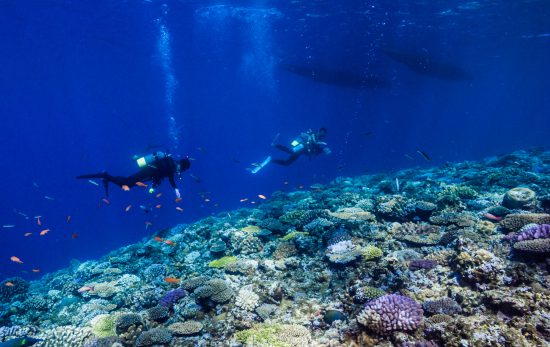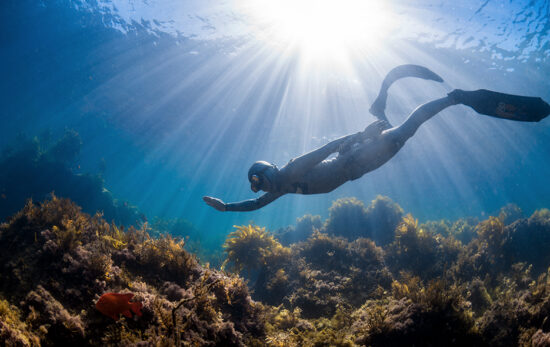Plane wrecks can make for exciting discoveries by divers and interesting habitats for marine life. However, sometimes due to the nature of their entry into the aquatic realm, they can cause harm to the natural environment.
When creating an artificial wreck for diving there can be more control over environmental factors. Hazardous material can be removed, penetration points can be made larger and the final resting place can be chosen to complement the surrounding environment. So, how does one scuttle a plane?
*For the purpose of this article we have followed the preparation of the Boeing 747 recently scuttled in Bahrain. Not all planes will follow this exact journey, but it’s an example to show the level of planning and preparation in order to safely scuttle a plane and create an artificial wreck.
Find a plane to scuttle
Key considerations include:
Type and size of plane. For the Bahrain team, they were looking specifically for a Boeing 747 as they wanted the park to have the largest intentionally-submerged aircraft in the world.
How the aircraft can be safely transported. There are many retired Boeing 747’s but the team had to find one that was within close proximity to Bahrain and that could be transported without having to dismantle its fuselage.
Safety. They had to find an aircraft that could have all its hazardous material stripped and disposed of safely and securely.
Identify dive site
As artificial wrecks are placed into the environment by man, it is important to be aware of the potential affect they might have on the marine life. For the team at DiveBahrain, this meant that the site of the project was determined following rigorous field investigations so as to avoid particularly sensitive ecologies in favor of one which would maximize natural colonization of the reef components by marine life. Fishing grounds, natural reefs, and marine protected areas were avoided. The selected site also ensures that there is good visibility and enough depth for an aircraft that is 17 meters high to be safely submerged.
Transport the plane
Once a plane has been identified, and the dive site determined, you might find they’re not that close! In the case of the Boeing 747 sunk in Bahrain the plane had to be transported from Fujairah in the UAE to Diyar Al Muharraq Lagoon in Bahrain before it could be towed out to the dive site. In all the plane was lifted by cranes, driven on a truck, transported through the Strait of Hurmuz by barge and towed by military vessels. Quite the journey!
Reassemble plane
If working on an aircraft the size of a Boeing 747 it may be necessary to remove the wings, or make other modifications to ensure easier transportation. This has to be reversed before divers visit the wreck.
Cleaning
Due to the nature of aeroplanes, they will undoubtedly contain many substances which are harmful to the natural environment, and even visiting divers. Considerable efforts have been expended to ensure delivery of the project in the most environmentally sound manner possible. All aircraft surfaces were subjected to a high-pressure wash with bio-friendly detergents to ensure all post-production coatings, oil and grime were removed. Furthermore, a vast amount of time has been spent removing contaminants from the aircraft. This included removing all wiring, all hydraulic, pneumatic and fuel systems, and all adhesives, insulation, plastics, rubbers, chemicals or other potential toxic substances. Removal and disposal of these items was conducted under the strictest of regional and international waste management guidelines.

Floating
In order to sink the plane, it must first be on top of the water! PADI staff were lucky enough to be present when the Boeing 747 gracefully slid from the staging site onto the lagoon. Float bags ensured the plane didn’t sink upon entry to the water and two tug boats gently maneuvered the plane so it could be towed out to sea.
Submerge plane
The final stage! The plane has been cleaned, the dive site decided upon and everything is in place for scuttling. There are many different ways to scuttle a plane but in Bahrain the buoyancy bags were slowly deflated ensuring the plane smoothly descended to its new home.
Final checks
Before divers can visit the wreck, it must have a few last checks. A team of divers inspected the aircraft’s exterior and interior to ensure that no sharp edges remain, that the openings are large enough/comfortable for divers to dive through and that the emergency openings on the aircraft’s hump are easily accessible. The team also made sure the aircraft is stable on the seabed in its correct position.
The Dive Bahrain 747 plane wreck is now open for divers from all around the world to visit, follow @divebahrain on Instagram or visit their website for more details.


